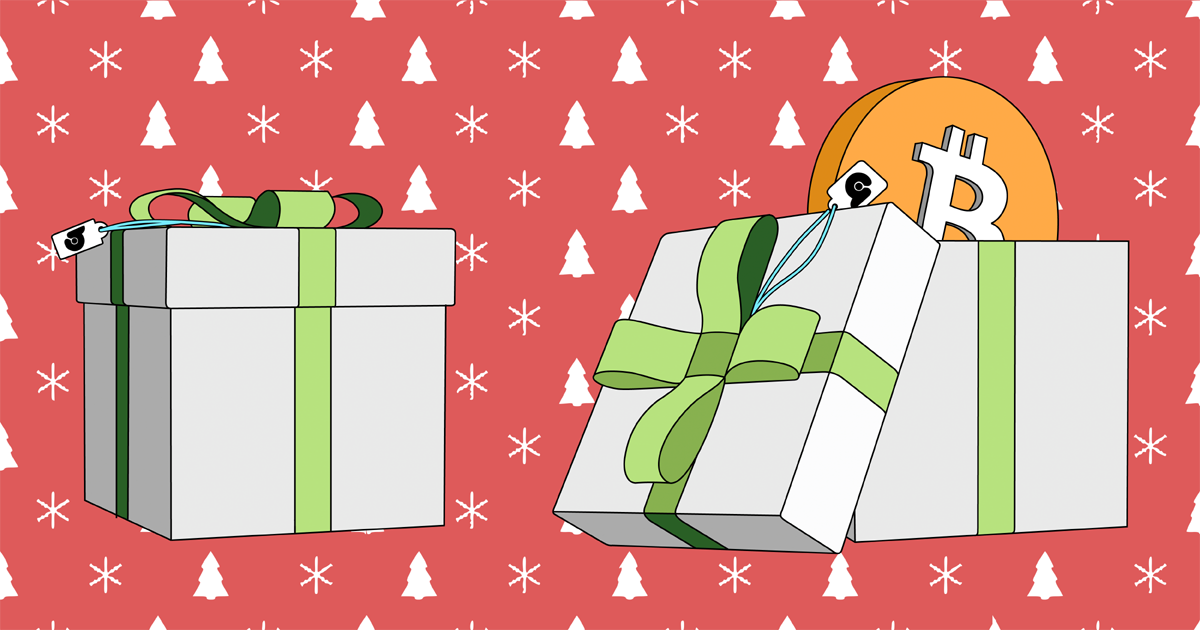Blockchain, Explained with Christmas Gifts

Even as someone who works in blockchain every single day, I admit it’s tricky to communicate. So if the subject of bitcoin or blockchain comes up this holiday season, here’s an easy way to explain it.
A very simple explanation of blockchain
Blockchain is kind of similar to the process of exchanging gifts at Christmas.
Imagine you’re with your family on Christmas morning and you give your sister a gift – a new guitar.
Your whole family watched the exchange. Your mom, dad, brother, and drunk uncle. They all witnessed you giving the guitar to your sister. Everyone agrees, she now owns the guitar.
Notice that you didn’t need anyone’s permission to give her the gift. You just did it. And there was no middleman. You gave her the gift directly.
You can’t take the gift back either. Sure, you could wrestle her and force it off her, but your family would step in and stop it.
This Christmas gift exchange is the basic principle of blockchain:
- It’s peer-to-peer – There’s no middleman. You transfer something to someone else directly.
- It’s permissionless – You don’t have to ask anyone’s permission to make the exchange (like a bank or another company).
- It’s witnessed and verified – A network of computers witness the exchange and validate it independently. This is just like your family witnessing and confirming the gift exchange.
- It’s irreversible – Every blockchain transaction is preserved forever and it cannot be reversed. If you tried to use brute force to hack or reverse the system, the network of witnesses would refuse to validate it.
What if your sister lives abroad?
Exchanging gifts with your sister in the same room is easy. Sending her a gift to another country, say, Japan, is not.
You’d have to pay a company like FedEx to ship the gift abroad and trust they’ll deliver it safely. You need permission from the US and Japanese governments to ship something between borders.
These middlemen will demand a ton of information from you, store it on their isolated databases, and possibly sell it to third-parties.
Even if you just want to send money to your sister in Japan, there are government rules on how much you can send, and to which countries. You’ll need a bank to make the exchange for you, and all the information is stored on one inaccessible database.
Blockchain is really just trying to make any exchange in the world as simple as giving a gift to someone in the same room – without all the middlemen.
How does it work?
Here’s where it gets technical.
Blockchain is essentially a database that records transactions. Except it doesn’t exist in one place. It exists on hundreds of computers all at once, freely available to anyone.
For simplicity’s sake, let’s use the example of bitcoin – the most common blockchain application. You can send bitcoin to your sister in Japan directly. You don’t need a bank to make the exchange and you don’t need the government’s permission (or even their currency). Your transaction is witnessed and verified by hundreds of computers (or nodes) around the world simultaneously and the blockchain is updated. I can’t take the money back and the transaction is preserved forever.
Money is just the start
Blockchain is usually talked about in relation to money and bitcoin. But this technology can be used for just about anything, like tracking the exchange and movement of food or medical supplies being sent around the world.
In our globalized world, third parties completely dominate the flow of goods, money, and data.
Blockchain is simply a way to remove these bloated central entities, and get back to direct exchanges – like giving a gift directly to your sister on Christmas Day.
Note: this is, of course, a simple, fun, and by no means complete explanation of blockchain technology. But if this has piqued your interest, you can dive deeper with this in-depth guide.
